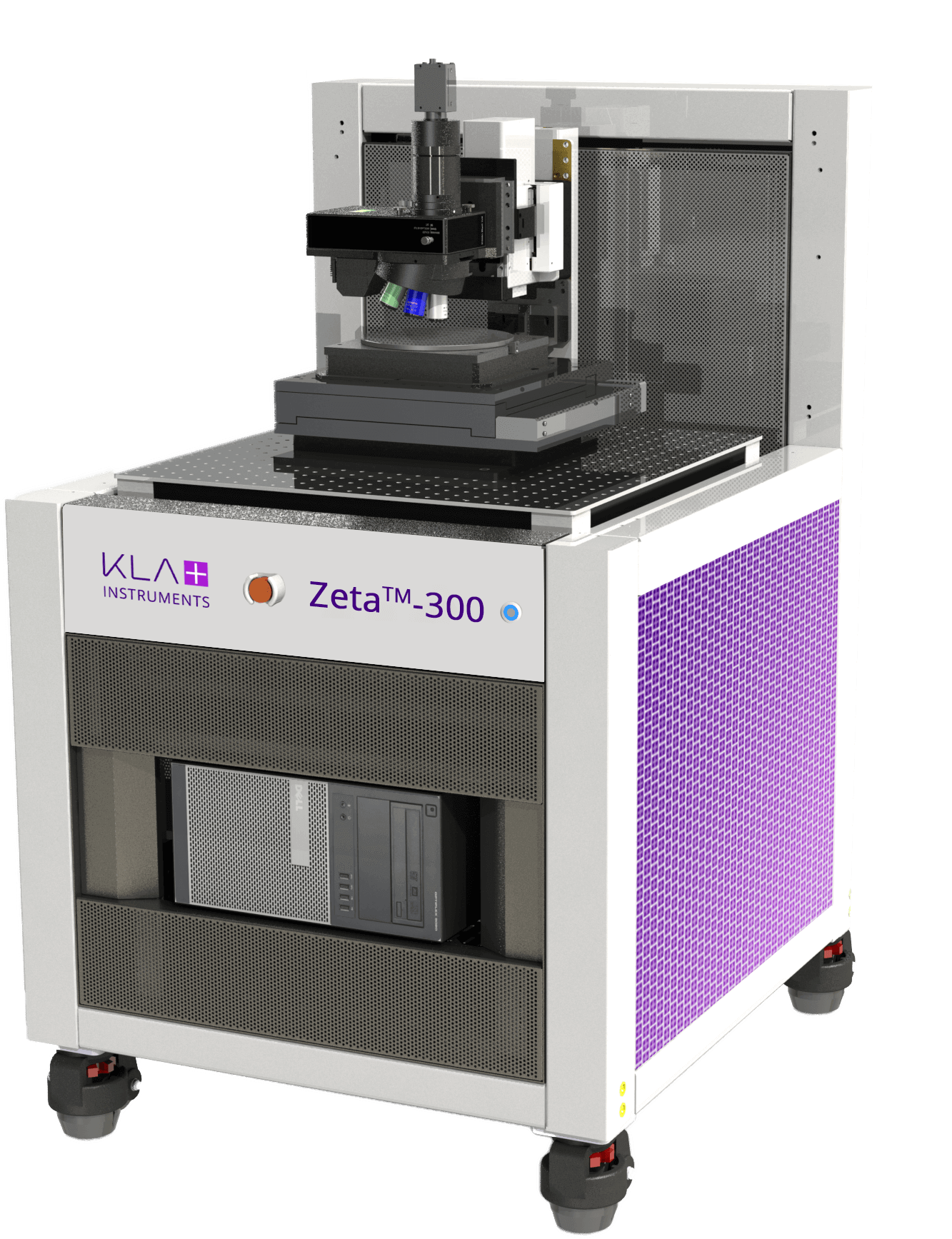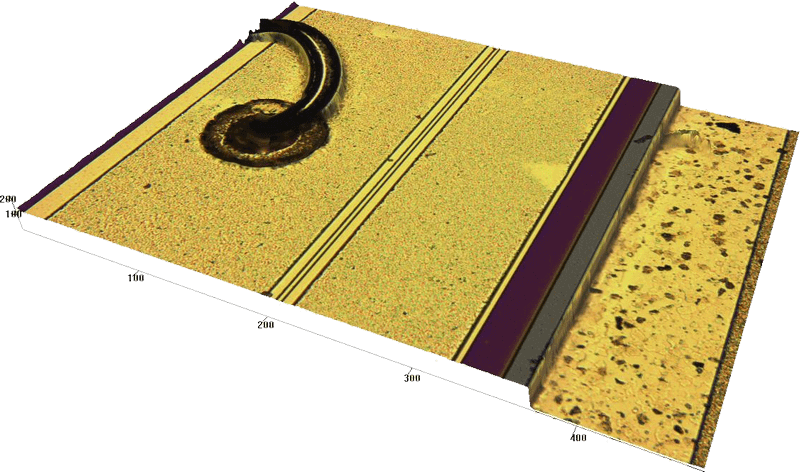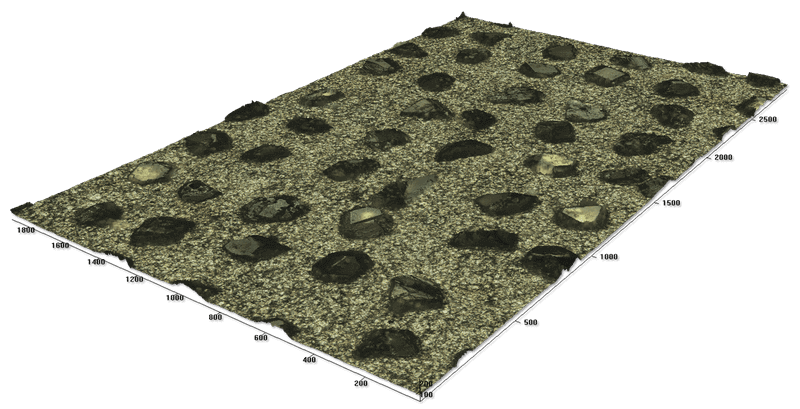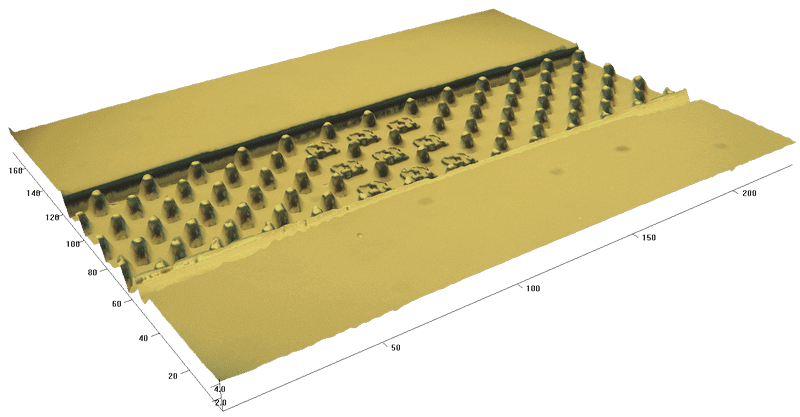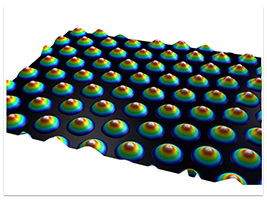■ZFT: Zeta Film Thickness
Zeta-300 可提供集成式宽频光谱仪,用于测量厚度30nm至100µm的透明薄膜。它能够测量单层或多层堆叠薄膜的厚度,用户从材料库中选择折射率值。可绘制样品上的薄膜厚度分布图,以确定样品的均匀性。
ZFT works on some of the least reflective surfaces, such as solar cells with reflectance of less than 0.1%. Many film thickness tools have difficulty obtaining a signal from these type of surfaces, since they depend on specular reflected light to calculate phase change or other parameters. The broadband white light and normal incidence illumination allow the tool to be used for a variety of optically transparent films with low reflectance.

■ZI: Zeta Interferometry
The Zeta-300 supports phase scanning interferometry (PSI) and vertical scanning interferometry (VSI) when combined with the piezo stage and an interferometric objective lens. PSI enables fast measurements of step heights from angstroms to hundreds of nanometers. VSI, also known as white light interferometry (WLI), enables measurement of step heights from hundreds of nanometers to hundreds of microns. Both are performed at better than nanometer-level resolution, independent of the objective numerical aperture.

■ZIC: Zeta Interference Contrast
The Zeta-300 utilizes Nomarski differential interference contrast microscopy to provide enhanced imaging of fine surface detail. Nomarski microscopy uses polarization and a prism to change the phase to enhance changes in slope on the sample surface. This enables visualization of defects on super-smooth surfaces, such as a monolayer of a contaminant. The ZIC scanning mode can convert these images into quantitative measurements of sub-nanometer level roughness by correlating the change in slope with roughness measured by another technique.

■ZSI: Zeta Shearing Interferometer
The Zeta-300 shearing interferometer measurement technique (ZSI) enhances the ZIC measurement by adding a change in the phase. Multiple images are collected with different phases, then processed through advanced algorithms to generate a quantitative measure of surface topography with angstrom-level resolution. This technique does not require interferometric objectives and has no Z-stage scanning, resulting in high-resolution measurements from angstroms to 80nm.

■Objective Lenses
The four-position turret holds objective lenses with magnifications ranging from 5X to 100X, to support nano-, micro- and macro-topography applications. The 5X objective is a Michelson interferometry objective. The 10X, 20X, 50X, and 100X objectives are Mirau interferometry objectives.

■Couplers
The Zeta-300 can be configured with four different optical couplers to change the optics magnification. The system can be configured with the 1X coupler to keep the native magnification, or configured with 0.35X, 0.5X, or 0.63X couplers to increase the magnification.

■Objective Lens Turret
The Zeta-300 can be configured with a 5 or 6 position manual turret and an objective lens sensor for automatic objective identification. The system can also be configured with a 5 or 6 position motorized turret for fully automated operation.

■Sample Lighting
The Zeta-300 uses dual high-brightness white LEDs as standard lighting. Backlighting through the sample chuck is also available to enhance the light for challenging transparent samples, such as patterned sapphire substrates (PSS). The Zeta-300 also supports darkfield lighting from the side.

■Stages
The Zeta-300 can be configured with a variety of stages to enhance system performance. A piezo Z-axis stage can be added to improve Z resolution for measurement of nanometer-level step heights with the ZDot or ZI measurement modes. An optional 280mm Z tower can accommodate large parts, such as tablets, phones and large machine components. The XY stage can be configured with a manual 300mm travel or motorized 150 or 200mm travel. A manual rotary stage can be added to the XY stage. A manual tip and tilt stage can be added to level the stage for interferometry measurements.

■Sample Chucks
The Zeta-300 can provide stages that support various application requirements. Solar samples need to be paired with a 156mm sample stage or a solar tilt edge stage to tilt the sample and measure its edges. The backlit stage can be used for transparent substrates to support transmitted illumination. A 300mm wafer stage is available.

■Isolation Tables
The system base of the Zeta-300 is equipped with built-in passive anti-vibration feet. For additional anti-vibration needs, passive or active benchtop anti-vibration platforms can also be provided.

■Step Height and Film Thickness Standards
The Zeta-300 uses thin and thick film NIST traceable step height standards offered by VLSI Standards. The standards feature an etched quartz step with a chrome coating. A step height range of 8nm to 250µm is available.
An available certified multi-step standard has nominal step heights of 8, 25, 50, and 100µm. The standard has various pitch patterns for XY calibration. A certified film thickness standard is available for ZFT that includes a reference silicon surface and a nominal 270nm silicon dioxide film thickness. Reference roughness and mirror samples are also available.

■Automated Sequencing Software
Automated sequencing software utilizes the motorized XY stage to allow the user to program measurement locations on the sample. The system will automatically measure each site and save the results in user-defined folders. An output report with sample statistics is generated to summarize the results.
Advanced sequencing software includes pattern recognition to automatically align the sample. This enables fully automated measurements, reducing the impact of operator error. Auto calibration can also be enabled when using embedded standards on the stage.

■Stitching Software
Automated image stitching software utilizes the motorized XY stage to combine adjacent scans to generate a stitched data set that is larger than a single field of view. The system automatically measures every site, aligns the images, and combines them into one data set. The results can be analyzed like any other results file.

■Apex Analysis Software
Apex analysis software enhances the tool’s standard data analysis capability with an extended suite of leveling, filtering, step height, roughness, and surface topography analysis techniques. Apex supports ISO roughness calculation methods plus local standards, such as ASME. Apex also serves as a report writing platform with the capability to add text, annotations, and pass/fail criteria. Apex is offered in eleven languages.

■Offline Analysis Software
The Zeta-300 offline software has the same data analysis and program creation functions as the machine. This enables users to create programs and analyze data without occupying machine time.


